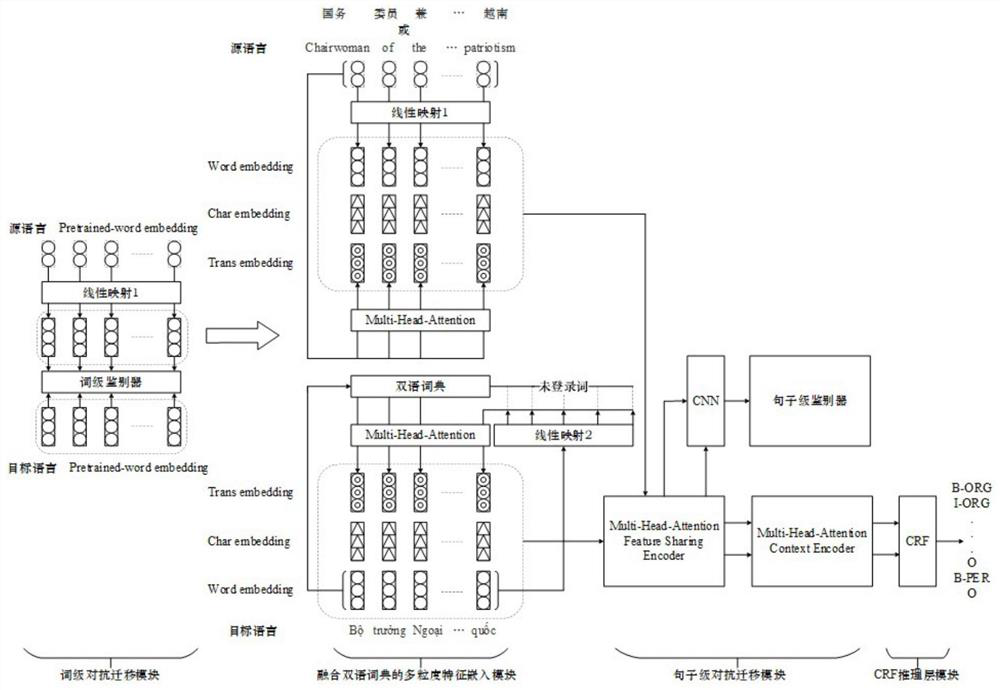Vietnamese Event Entity Recognition Method Fusion Dictionary and Adversarial Transfer
A technology of entity recognition and dictionary, applied in neural learning methods, semantic analysis, natural language translation, etc., can solve problems such as polysemy of a word in bilingual translation, poor sequence feature effect, single semantic representation of target language words, etc. Achieve the effect of improving the effect of entity recognition and improving the effect of entity recognition
- Summary
- Abstract
- Description
- Claims
- Application Information
AI Technical Summary
Problems solved by technology
Method used
Image
Examples
Embodiment 1
[0026] Embodiment 1, as figure 1 As shown, a Vietnamese event entity recognition method integrating dictionary and adversarial transfer, the method includes:
[0027] Step1. In the process of word-level adversarial transfer training, the linear mapping layer and the word-level discriminator are confronted and confused to make the linear mapping layer continuously optimized;
[0028] Step 2. Extract and fuse the target language word-level features, target language character-level features in the target language sentences and the corresponding source language word-level features found through the bilingual dictionary; extract and fuse the source language word-level features and source language words in the source language sentences. Character-level features and word-level features of the source language after the sentence has passed through the optimized linear mapping layer;
[0029] Step 3. In the process of sentence-level adversarial transfer training, the multi-head attenti...
Embodiment 2
[0041] Embodiment 2, as figure 1 As shown, the fusion dictionary and the Vietnamese event entity recognition method against migration, the specific steps of the fusion dictionary and the Vietnamese event entity recognition method against migration are as follows:
[0042] Step1. First, obtain the monolingual corpus of English, Chinese and Vietnamese respectively, and train their respective pre-trained monolingual word vectors through the fasttext tool. English and Chinese were used as the source language and Vietnamese as the target language, respectively. Get the pre-trained target language word vector with pretrained source language word vectors
[0043] in, and target language words word with source language The vector representation of , N and M are the number of words contained in the word vector, d t and d s Represent the dimensions of the target language word vector and the source language word vector, respectively.
[0044] Then use a linear mapping fun...
PUM
 Login to View More
Login to View More Abstract
Description
Claims
Application Information
 Login to View More
Login to View More - R&D
- Intellectual Property
- Life Sciences
- Materials
- Tech Scout
- Unparalleled Data Quality
- Higher Quality Content
- 60% Fewer Hallucinations
Browse by: Latest US Patents, China's latest patents, Technical Efficacy Thesaurus, Application Domain, Technology Topic, Popular Technical Reports.
© 2025 PatSnap. All rights reserved.Legal|Privacy policy|Modern Slavery Act Transparency Statement|Sitemap|About US| Contact US: help@patsnap.com



